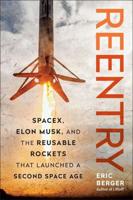Publisher's Synopsis
This paper presents dynamic modeling of the crew exploration vehicle (Orion) active thermal control system (ATCS) using Simulink (Simulink, developed by The MathWorks). The model includes major components in ATCS, such as heat exchangers and radiator panels. The mathematical models of the heat exchanger and radiator are described first. Four different orbits were used to validate the radiator model. The current model results were compared with an independent Thermal Desktop (TD) (Thermal Desktop, PC/CAD-based thermal model builder, developed in Cullimore & Ring (C&R) Technologies) model results and showed good agreement for all orbits. In addition, the Orion ATCS performance was presented for three orbits and the current model results were compared with three sets of solutions- FloCAD (FloCAD, PC/CAD-based thermal/fluid model builder, developed in C&R Technologies) model results, SINDA/FLUINT (SINDA/FLUINT, a generalized thermal/fluid network-style solver ) model results, and independent Simulink model results. For each case, the fluid temperatures at every component on both the crew module and service module sides were plotted and compared. The overall agreement is reasonable for all orbits, with similar behavior and trends for the system. Some discrepancies exist because the control algorithm might vary from model to model. Finally, the ATCS performance for a 45-hr nominal mission timeline was simulated to demonstrate the capability of the model. The results show that the ATCS performs as expected and approximately 2.3 lb water was consumed in the sublimator within the 45 hr timeline before Orion docked at the International Space Station. Wang, Xiao-Yen J. and Yuko, James Glenn Research Center WBS 644423.06.32.01.03









